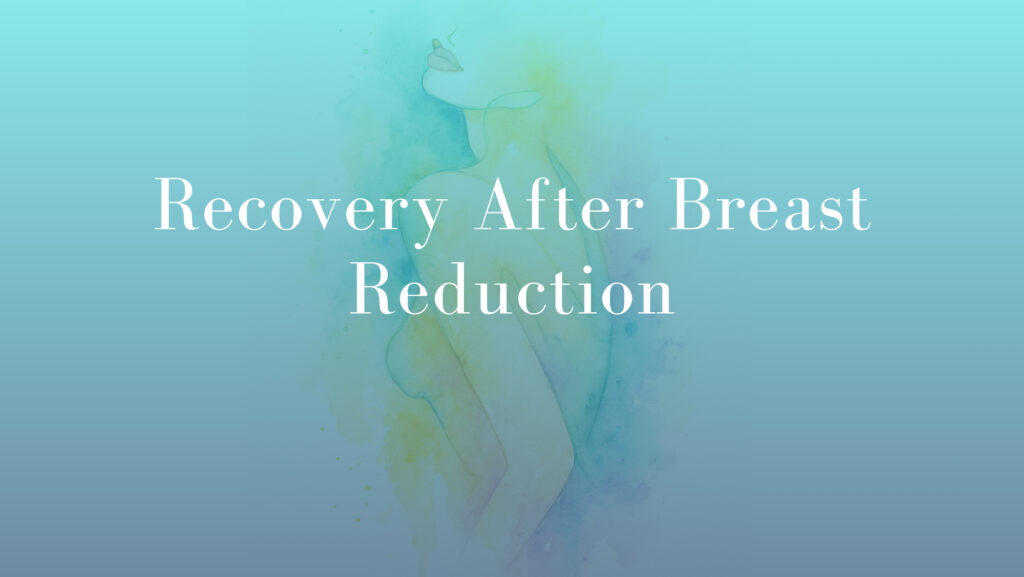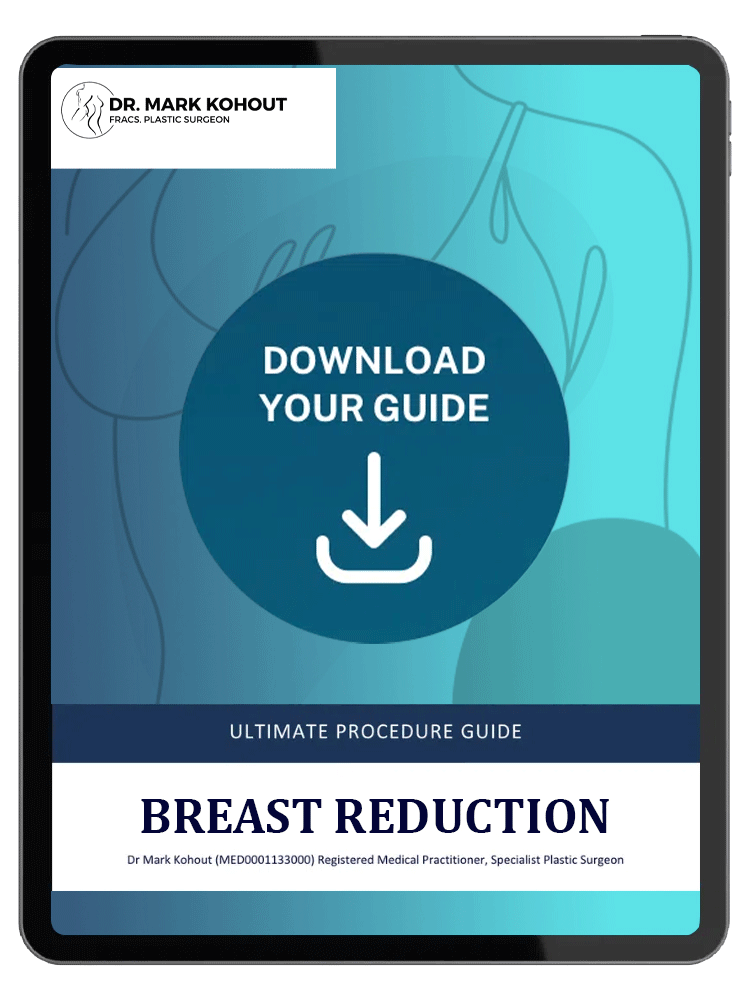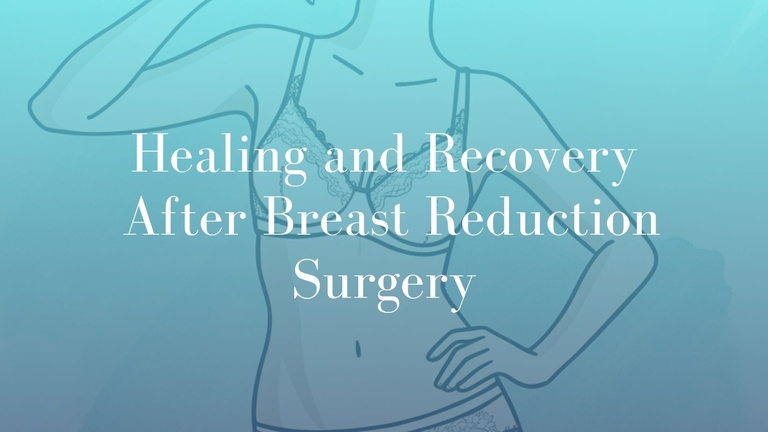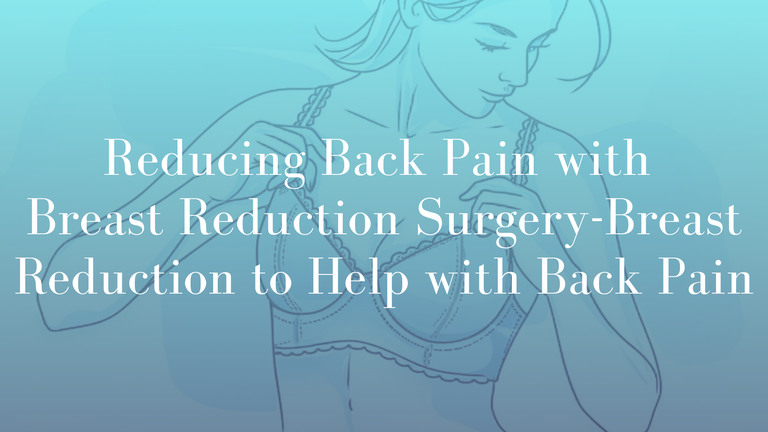
Breast reduction surgery, also known as reduction mammoplasty, is a surgical procedure that reduces the size and weight of the breasts. For many people, overly large breasts can contribute to physical challenges such as neck or shoulder pain, restricted activity, or difficulty finding comfortable clothing. While much attention is often placed on the operation itself, it is equally important to understand the recovery process. Recovery is a gradual journey that involves rest, wound care, follow-up visits, and adjustments to lifestyle activities.
In Sydney, patients considering breast reduction can consult with Dr Mark Kohout, Specialist Plastic Surgeon, who has guided many individuals through the process of surgery and recovery. By gaining an understanding of what to expect at each stage, patients are better prepared to navigate the healing process and make informed decisions about their care. This article will provide a comprehensive guide to recovery, from the immediate postoperative period through the longer-term adjustments that occur over several months.
Understanding Breast Reduction Surgery
Breast reduction, or reduction mammoplasty, is a procedure designed to remove breast tissue, fat, and skin to achieve a smaller and lighter breast size. The decision to undergo this surgery is often motivated by physical discomfort and practical considerations. Some individuals experience strain across the shoulders, grooves from bra straps, or persistent neck and back pain that are related to the weight of the breasts. Others find that large breasts interfere with their ability to exercise or participate in certain physical activities. Clothing fit can also be a challenge, as standard sizes may not accommodate both the bust and the rest of the body comfortably.
Every breast reduction surgery is tailored to the individual. Techniques may vary depending on the amount of tissue to be removed, the desired breast size, and the patient’s anatomy. The surgical plan is discussed thoroughly during consultation, allowing patients to understand the approach that will be taken and what their recovery may involve. It is important to note that recovery is not identical for every patient. Factors such as age, skin elasticity, general health, and lifestyle habits like smoking can influence how quickly and smoothly healing occurs.
Immediate Recovery After Surgery (Hospital Phase)
Breast reduction surgery is performed under general anaesthesia, which means patients are asleep for the duration of the procedure. Immediately after the operation, patients are transferred to a recovery area where nurses and anaesthetists monitor vital signs and comfort levels. This stage is important for ensuring that the effects of anaesthesia wear off safely and that any initial pain or nausea is managed appropriately.
Many patients remain in hospital overnight so that the surgical team can observe the first stages of healing. Some patients may be discharged on the same day if their operation was straightforward and their overall health allows for safe early discharge. Dressings are placed over the incision sites to protect the wounds. In certain cases, temporary drains are inserted to collect excess fluid or blood from the surgical area. These drains are usually removed within a few days, either before discharge or at an early follow-up visit.
During this initial recovery phase, it is common to feel soreness across the chest, a sense of tightness, or fatigue from the anaesthesia. Swelling and bruising typically appear within the first twenty-four hours. Although rest is essential, patients are also encouraged to begin gentle movement, such as walking short distances around the ward. Early mobilisation supports circulation and reduces the risk of complications such as blood clots. Before leaving hospital, patients receive detailed instructions about wound care, activity restrictions, and medications.
The First Week At Home
The first week after surgery is usually the most restrictive. Many patients find that they need significant rest, although light activity around the home is beneficial. Swelling and bruising are at their peak during the early days, and the breasts may feel firm or heavy. A supportive surgical bra or compression garment is typically worn continuously, as it provides stability, helps control swelling, and reduces strain on the incisions.
Discomfort is expected in this period, and prescribed pain medication helps manage this. Patients often describe the sensation as a tight or pulling feeling across the chest rather than sharp pain. It is important to take medication as directed rather than waiting for discomfort to become severe. Fatigue is also common, and many people find they need short naps throughout the day.
Sleep position plays a role in comfort and healing. Patients are usually advised to sleep on their back with the upper body slightly elevated using pillows. This position reduces tension on the incisions and can make breathing easier in the days immediately after surgery. Activities such as lifting heavy objects, bending forward, or reaching above shoulder level should be avoided. Many patients find it helpful to arrange for a family member or friend to assist with meals, household tasks, and errands during this stage.
Showering may be permitted, but patients are generally advised to avoid soaking the incisions in baths or swimming pools. Dressings should be kept intact unless specifically changed at a follow-up visit. This first week is about protecting the surgical sites, resting, and allowing the body to begin the healing process.
Weeks 2 To 4: Gradual Return To Routine
By the second week, many patients notice that swelling and bruising begin to decrease. Energy levels gradually improve, although some residual fatigue may persist. This is also the time when follow-up appointments with the surgeon occur. During these reviews, wound healing is assessed, dressings may be changed, and stitches may be removed if they are not dissolvable. These visits are essential for monitoring progress and providing reassurance.
Driving is often possible once patients feel comfortable performing movements such as turning the steering wheel or checking blind spots. It is also important that patients are no longer taking strong pain relief that could impair reaction times. For many individuals, this occurs around the two-week mark. Returning to work depends largely on the type of employment. Those in desk-based roles often return within two weeks, while jobs that require heavy lifting, bending, or long periods of standing may require more time off.
Although mobility is better at this stage, restrictions remain in place. Patients are usually advised not to lift heavy items, perform strenuous exercise, or raise their arms overhead for several more weeks. The support garment continues to be worn to assist with swelling and provide stability. Many patients describe this period as one of progress mixed with caution, as they are eager to resume activities but must remain attentive to their body’s healing needs.
Week 4 To 6: Building Back Strength
Between weeks four and six, patients often feel significantly better. Swelling is usually reduced, bruising has faded, and the breasts begin to settle into a more natural shape. Some residual firmness may still be present, and the breasts may sit slightly higher than their eventual position. Over time, as tissues soften and gravity takes effect, the breasts adopt a more settled contour.
Daily activities can generally be resumed with greater ease at this point. Patients often feel comfortable returning to social engagements and wearing a wider variety of clothing. However, it is important to remember that the tissues are still healing internally. Exercise is reintroduced gradually, starting with walking and light stretching. High-impact exercise, weight training, or contact sports should wait until clearance is given by the surgeon.
Supportive bras remain a key part of recovery during this period. Underwire bras are usually avoided until incisions are fully healed and scar tissue is stronger. Sports bras or post-surgical bras are commonly worn instead. Many patients find this stage rewarding as they regain independence and see the first glimpses of their new breast shape, though patience remains important as final results are still months away.
Beyond 6 Weeks: Long-Term Recovery
Healing after breast reduction continues well beyond the first six weeks. By this time, many patients have returned to most daily activities and are gradually resuming their usual exercise routines. Swelling continues to resolve, and the breasts slowly take on their long-term size and position. It is normal for subtle changes to occur for several months, as tissues soften and scars mature.
Scar healing is one of the most gradual aspects of recovery. Initially, incision lines are red or pink and may feel firm to the touch. Over time, they usually fade in colour and flatten. The final appearance of scars varies between individuals and depends on skin type, genetics, and how well aftercare instructions are followed. Protecting the scars from sun exposure is particularly important, as ultraviolet light can darken scars permanently. In some cases, topical treatments or silicone products are recommended to support scar maturation.
Patients are typically cleared for all forms of physical activity after eight to twelve weeks, although this depends on individual healing and the surgeon’s advice. Sports, swimming, and high-intensity workouts can be reintroduced gradually. Emotionally, patients may need time to adjust to their new proportions. This adjustment is a natural part of the process, and patience helps in allowing the body to settle into its new shape.
Breast Reduction Before and After Images
Risks, Safety, And Individual Factors
Like all surgical procedures, breast reduction carries potential risks. These may include infection, bleeding, delayed wound healing, and changes in nipple sensation. Some patients may experience asymmetry between breasts, which can occur because each breast heals differently. Breastfeeding ability may also be affected, depending on the surgical technique used.
Individual factors play a role in recovery. Age can influence skin elasticity and wound healing, while health conditions such as diabetes may increase the risk of complications. Smoking is a significant factor that can impair healing, leading to wound problems or more noticeable scarring. The surgical approach itself, including the incision pattern and the amount of tissue removed, also influences how recovery unfolds.
During consultation, patients receive clear information about these risks and the measures taken to reduce them. The discussion ensures that individuals are well informed and able to weigh the benefits of surgery against the potential challenges.
Supporting Your Recovery Journey
Recovery is a process that can be supported with preparation and planning. Many patients in Sydney find it helpful to organise their home environment before surgery by setting up a comfortable resting space with pillows, entertainment, and essential items within easy reach. Preparing meals in advance or arranging for help with cooking and cleaning can also ease the burden in the first few days.
After surgery, adherence to the surgeon’s instructions is crucial. Wearing the recommended garment, taking prescribed medications, attending scheduled follow-up appointments, and avoiding smoking and alcohol all contribute to a smoother recovery. Light activity, such as walking around the home, supports circulation and reduces the risk of blood clots, while rest allows the body to dedicate energy to healing. Patients under the care of Dr Mark Kohout, Plastic Surgeon in Sydney, are guided through this process with tailored advice.
When To Contact Your Surgeon
Recognising when to seek medical advice is an important part of recovery. Patients are encouraged to contact their surgeon if they develop a fever, notice increasing redness around the incisions, or see discharge from the wounds. Pain that suddenly worsens, rather than gradually improving, should also be assessed. In addition, shortness of breath, chest pain, or swelling in the calf can indicate more serious issues such as blood clots, and immediate medical attention is essential.
Dr Mark Kohout provides specific guidance on what symptoms to monitor and how to contact the team. Early intervention helps to manage potential complications effectively and supports a safer recovery process.
Key Takeaways For Patients Considering Breast Reduction In Sydney
Recovery after breast reduction is a gradual process that unfolds over weeks and months. The immediate postoperative period focuses on rest and wound care, followed by a gradual return to routine activities and eventually the resumption of exercise and social life. Final results, including scar maturation and breast shape, may take several months to become fully apparent.
Every recovery journey is unique, influenced by individual health, lifestyle factors, and surgical technique. Supportive garments, adherence to aftercare instructions, and regular follow-up visits all contribute to safe healing. For those in Sydney considering the procedure, consultations with Dr Mark Kohout, Specialist Plastic Surgeon, provide an opportunity to discuss these details in depth and receive personalised guidance.
FAQs About Recovery After Breast Reduction Surgery
How Will My Daily Routine Be Affected In The First Few Weeks After Breast Reduction Surgery?
Most patients find they need to adjust their daily activities during the first few weeks. Tasks that involve lifting, stretching, or overhead movement are generally limited, and a supportive garment is usually worn continuously. Planning ahead by arranging help with household chores and childcare can make this stage more manageable.
What Does The Support Garment Do And How Long Will I Need To Wear It?
A supportive bra or surgical garment helps reduce swelling and provides stability to the healing tissues. The exact length of time it should be worn varies depending on individual recovery, but it is typically recommended for several weeks. Your surgeon will provide specific advice tailored to your progress.
Is It Normal For The Breasts To Feel Firm Or Sit Higher Immediately After Surgery?
Yes, firmness and a slightly elevated position are expected in the early recovery phase. As swelling decreases and tissues settle, the breasts gradually adopt a more natural contour. This process can continue for several months after surgery.
When Can I Expect To Resume Exercise Beyond Gentle Walking?
Light walking is often encouraged within days of surgery, but more vigorous exercise such as running, swimming, or weight training should be delayed until the surgeon confirms that healing is sufficient. This is usually several weeks after the procedure, though the timing can differ between patients.
How Do Scars Change Over Time Following Breast Reduction Surgery?
Scars typically appear red or raised in the early months, but they often fade and soften gradually. Their final appearance depends on factors such as skin type, genetics, and adherence to aftercare instructions. Protecting scars from sunlight is especially important to support their long-term appearance.
Are Changes In Nipple Sensation Common After Breast Reduction Surgery?
Some patients experience changes in nipple or breast sensation after surgery. This may include temporary numbness or increased sensitivity. In many cases, sensation improves over time, but the extent of recovery can vary.
What Should I Do If Something Feels Different From What I Was Told To Expect During Recovery?
If you experience unexpected symptoms, such as increasing pain, spreading redness, or unusual discharge from the incisions, it is important to contact your surgeon promptly. Open communication helps ensure that concerns are addressed quickly and supports safe healing.
Medical References
- A 10-year Analysis of Aesthetic Outcomes and Quality of Life After Breast Reduction Surgery https://pmc.ncbi.nlm.nih.gov/articles/PMC12007868/
- The impact of age on outcomes after breast reduction surgery https://www.sciencedirect.com/science/article/abs/pii/S1748681524005862
- Quality of Life in Patients Pre- and Post-Breast Reduction Surgery https://karger.com/brc/article/20/3/170/924120/Quality-of-Life-in-Patients-Pre-and-Post-Breast
- Bridging the Knowledge Gap – Risk Factors and Early Complications Associated with Breast Reduction Surgery https://link.springer.com/article/10.1007/s00266-024-04295-5
- Breast Reduction – StatPearls https://www.ncbi.nlm.nih.gov/books/NBK441974/
Call To Action
If you are considering breast reduction surgery in Sydney, it is important to understand not only the procedure but also the recovery process. A consultation with Dr Mark Kohout, Specialist Plastic Surgeon in Sydney, offers the chance to learn about the stages of healing, the expected timeline, and the precautions needed for safe recovery. With clear information and professional support, patients can make informed choices about whether breast reduction is appropriate for their individual circumstances.
Further Reading
- Read more about Dr. Mark Kohout’s Blog on Recovery after Breast Reduction – Your Guide to Reduction Mammaplasty – Tips and Timeline
- Read more about Dr. Mark Kohout’s Blog on Recovery After Breast Lift (Mastopexy)
Related Blog Posts
Healing and Recovery After Breast Reduction…
Comprehensive Guide to Healing and Recovery After Breast Reduction Surgery Download Dr Mark Kohout’s Breast Reduction Surgery Guide Healing and Recovery After Breast Reduction: Timeline and Tips Breast reduction surgery,…
Breast Reduction Medicare Cover – Will…
Will Medicare Cover My Breast Reduction? Breast reduction, medically known as reduction mammoplasty, is a surgical procedure that removes excess breast tissue and skin to achieve a breast size more…
Reducing Back Pain with Breast Reduction…
The Connection between Back Pain and Overly Large Breasts For some women, overly large breasts can be a source of discomfort and pain, particularly in the back region. The weight of…
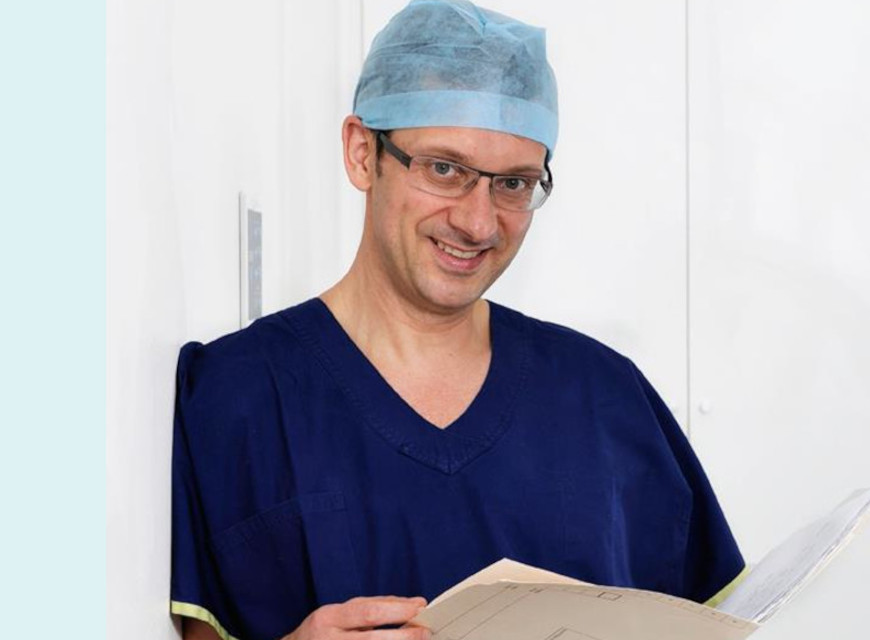
Experienced Plastic Surgeon
Dr. Mark Kohout
A qualified plastic surgeon who operates with care and integrity, based in central Sydney with over 20 years of experience in the cosmetic field. His extensive training and experience assures patients they are in highly trained surgical hands. Dr. Kohout is a dedicated, friendly professional who is committed to providing the high quality care, support and results, alongside his compassionate team.
Dr Mark Kohout (MED0001133000)
Specialist Plastic Surgeon
Specialist registration in Surgery – Plastic Surgery

